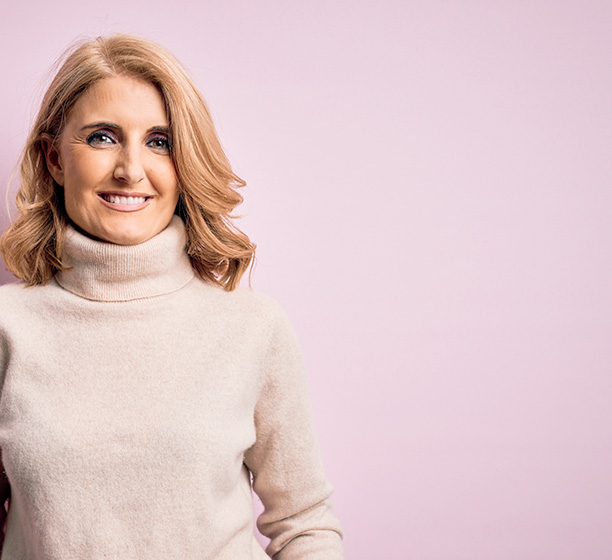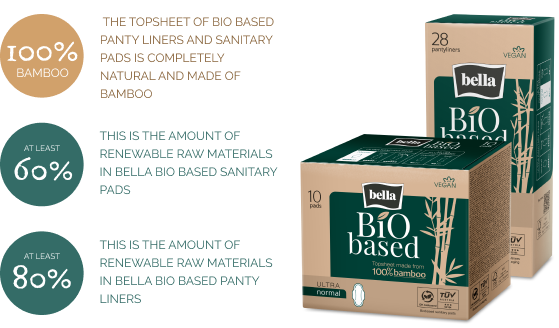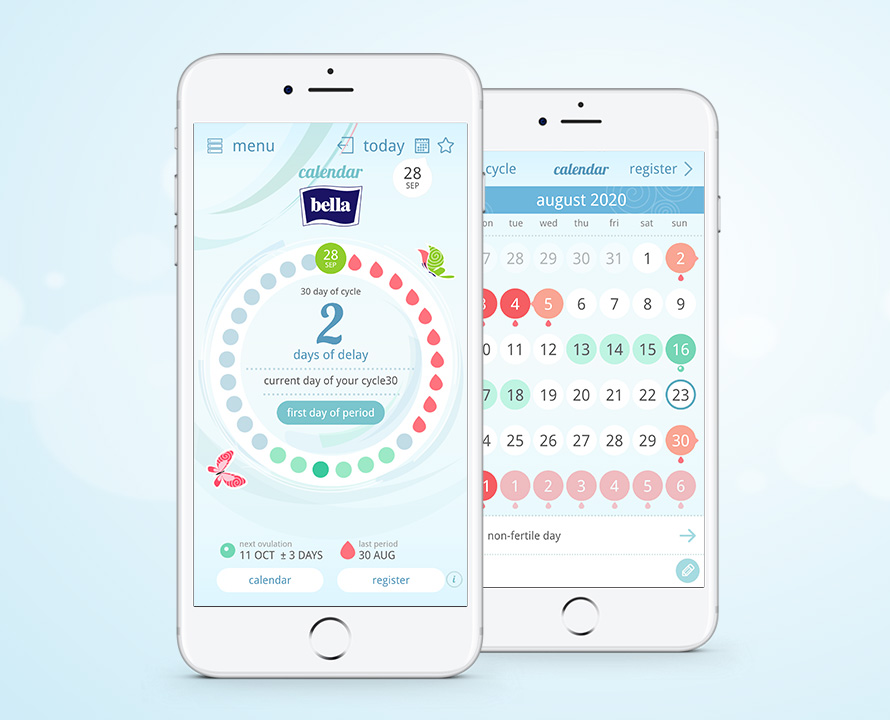 konfigurator
konfigurator
 Products
Products

Menstrual cycle. Follicular phase and luteal phase
The menstrual cycle of every woman is divided into phases. It does not mean, however, that we all experience it identically. Knowing your body and what changes it undergoes will help you better understand your own needs and feel comfortable every day.
Menstrual cycle from the top – follicular phase
 The start of the follicular phase coincides with the first day of your period. This phase is distinguished by reduced levels of the progesterone and oestrogen hormones and lasts around 14 days until ovulation. In the first days of the follicular phase, the endometrium (uterine mucosa) is the thinnest in the entire cycle and gradually thickens to be ready for a potential pregnancy.
The start of the follicular phase coincides with the first day of your period. This phase is distinguished by reduced levels of the progesterone and oestrogen hormones and lasts around 14 days until ovulation. In the first days of the follicular phase, the endometrium (uterine mucosa) is the thinnest in the entire cycle and gradually thickens to be ready for a potential pregnancy.
During the follicular phase, 5-7 Graafian follicle mature in one or both ovaries. Their growth is stimulated by follicle stimulating hormone. The follicles become increasingly larger and start to produce oestrogen, a hormone that inhibits the production of follicle stimulating hormone. In the last phase of the follicle maturation, one or two become dominant. The follicular phase ends with ovulation – a release of an egg from the follicle.
Ovulation and luteal phase
The follicular phase is followed by the luteal phase. Its beginning falls on the first day of ovulation and lasts until the first day of menstruation. You can tell that you are ovulating by observing your own body. Your body temperature rises and you can notice characteristic cervical mucus, while some women feel ovulation pain. During ovulation, you may seem more attractive to your partner and be more satisfied with your looks. In this phase, the luteinizing hormone level increases, which you can detect by doing an ovulation test. The luteal phase is when the oestrogen and progesterone levels rise, while the lining of the uterus changes to be prepared for the implantation of an embryo. If you do not conceive, the lining of the uterus is shed, which leads to a menstruation.

Tips for teenagers
Learn more
Tips
for all
of us
Learn more

Tips in menopause
Learn more#DISPOSEWISELY!
On the packaging of products, such as sanitary napkins, panty liners and tampons, you can see the marking:


It is to clearly indicate where used hygiene products should go and illustrate the consequences of their improper disposal.
Thanks to proper segregation, we contribute to reducing the amount of waste of hygiene products thrown into toilets and, consequently, ending up in the seas and oceans.
Find out more
 Polski
Polski Angielski
Angielski Rosyjski
Rosyjski Czech Republic
Czech Republic India
India Lithuania
Lithuania Germany
Germany Romania
Romania Słowacja
Słowacja Ukraine
Ukraine Hungary
Hungary Austria
Austria Bułgaria
Bułgaria

